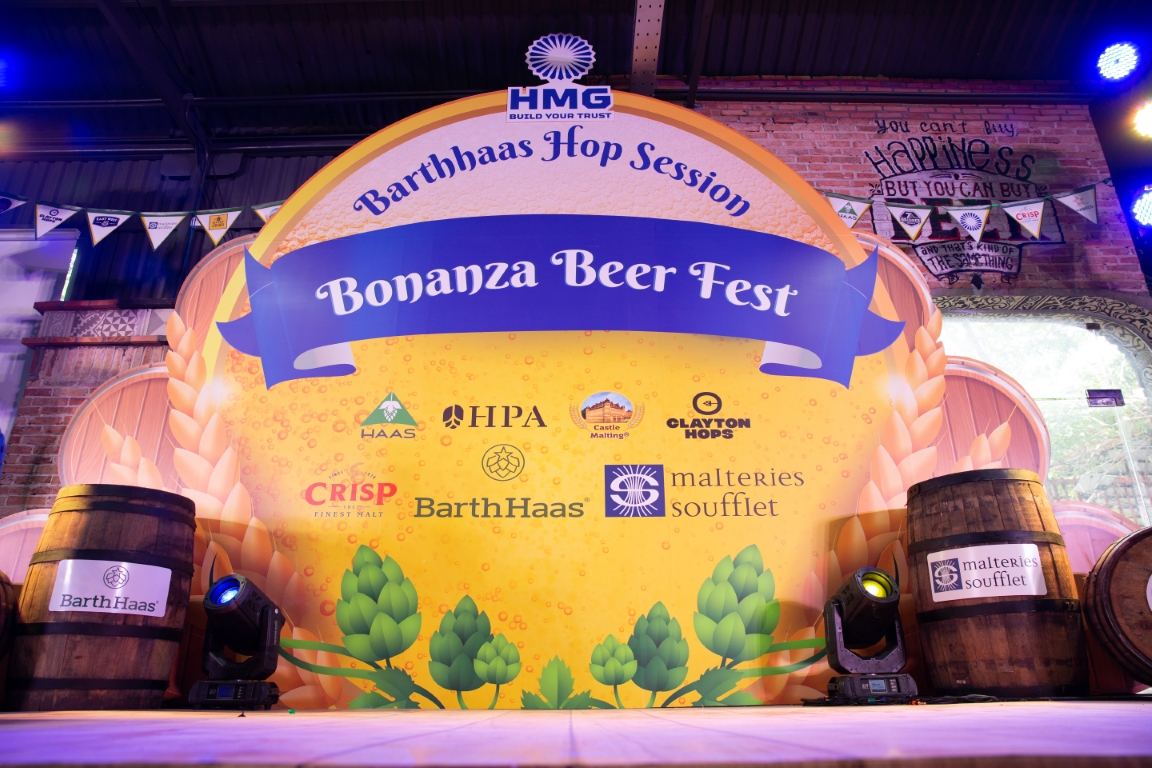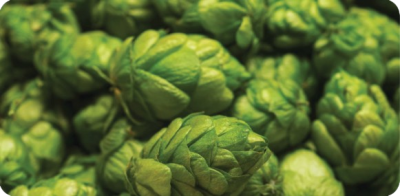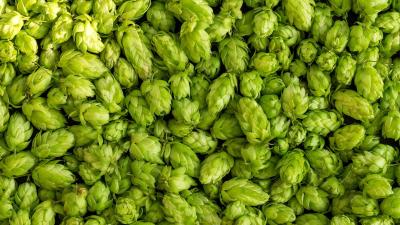Hop Acreage Germany
|
Variety |
Total acreage 2025 in ha |
Difference to 2024 in ha |
|
Herkules |
7,848 |
- 69 |
|
Polaris |
576 |
- 12 |
|
Titan |
560 |
+ 238 |
|
Perle |
2,343 |
- 517 |
|
Hallertauer Tradition |
2,017 |
- 444 |
|
Germany in total |
18,962 |
- 1,327 |
Source: Verband Deutscher Hopfenpflanzer e.V.
The acreage in Germany decreased by 1,327 ha (- 6.5 %) to a total of 18,962 ha.
In contrast to recent years, the world's largest variety in terms of area, Herkules, was reduced for the first time by 69 ha. In comparison, the new high-alpha variety Titan increased by 238 ha (+74 %).
Aroma varieties continue to be reduced. The largest absolute decline was recorded by the Perle variety with -517 ha (-18 %), followed by Hallertau Tradition with -444 ha (-18 %). The flavor varieties also continued to decline: Amarillo, Akoya, Hallertau Blanc, Tango and Mandarina Bavaria all lost double-digit hectares. The varieties Hallertau Magnum (-292 ha), Hallertau Taurus (-27 ha), Northern Brewer (-8 ha), Spalter Select (-10 ha) and Saphir (-15 ha) were also grubbed up.
As in previous years, the number of active farms continues to fall on 965 (-44) active growers. In comparison to previous years, not all the land that becomes available is leased to neighboring farms, meaning that they are no longer in production.
Weather conditions and Plant Development Germany
Temperatures from October to March were consistently above the 10-year average. Heavy rainfall during the harvest in September was followed by winter months with very low precipitation, which was up to 65 % below the long-term average (Hüll weather station, February 2025).

Illustration 1. Herkules Hallertau

Illustration 2. Herkules Tettnang
Due to the low rainfall in spring, work in the hops could be completed on time and without structural damage to the soil. Warm temperatures in April led to a strong growth in the hops. The first farms started training in mid-April, about a week earlier than usual. Due to the rather cool weather in May and early June, the hops' developmental advance was slowed down again somewhat, so that they are currently in line with the long-term average.
The hops have currently reached BBCH stage 41, which means that the hop plants have now reached their trellis height. Downy mildew can be found in some crops and must be treated continuously by the growers. Powdery mildew can also be observed, especially in susceptible varieties like Herkules. Aphids can still be
found, but mostly below the control threshold. The red spider mite can be found in many crops. Acaricide measures are planned for most farms in the coming week.

Illustration 3. Temperature June 2025

Illustration 4. Precipitation June 2025
Other European growing areas
Further official acreage figures are available so far from the Czech Republic, Poland and Slovenia.
Hop Acreage & Plant Development Czech Republic
In the Czech growing regions, the acreage was reduced by a further 26 ha (- 0.5 %) to a total of 4,816 ha. Saazer, the most important fine aroma variety worldwide in terms of area, which suffered from heat and drought last year, was reduced by 26 ha (- 0.6 %). The more climate-stable variety Sladek (+12 ha, +2 %), on the other hand, continued to increase in area and represents a sustainable variety for the growing region.
The development level of most varieties is about five days ahead of the long-term average. In the Czech hop-growing regions, the winter months were rather warm and there was only a small amount of precipitation. Aphids are present locally, and some hops are also infested with the red spider mite. Infestation with downy mildew continues to increase. Powdery mildew is not a problem.
|
Variety |
Total acreage 2025 in ha |
Difference to 2024 in ha |
|
Saaz |
3,954 |
- 26 |
|
Sladek |
462 |
+ 12 |
|
Czech Republic in total |
4,816 |
- 29 |
Source: ÚKZÚZ – Central Institute for Supervising and Testing in Agriculture

Illustration 5. Saazer
Hop Acreage & Plant Development Poland
In Poland, it was also a rather warm winter with only a few days of frost and low levels of precipitation. Growth conditions are currently good and the level of development corresponds to the long-term average. Diseases and pests can be found, but these are under control.
|
Variety |
Total acreage 2025 in ha |
Difference to 2024 in ha |
|
Magnum |
598 |
+/- 0 |
|
Magnat |
212 |
- 5 |
|
Marynka |
209 |
- 25 |
|
Poland in total |
1,581 |
+ 10 |
Source: IHGC

Illustration 6. Lubelski
Hop Acreage & Plant Development Slovenia
In Slovenia, the acreage decreased by 41 ha (-2 %) to a total of 1,603 ha. The largest variety, Aurora (-80 ha, -11 %), in particular was cut back, while 63 ha (+12 %) of the Celeia variety were added to the area under cultivation.
The months from January to March were around 1.5 °C warmer than the long-term average. The total precipitation from January to April was around 75% of the average. Most of the rain fell in January and March. Plant development is uneven and is a few days behind the long-term average. The primary infection is largely under control, the secondary infection is below the control threshold.
|
Variety |
Total acreage 2025 in ha |
Difference to 2024 in ha |
|
Aurora |
620 |
- 80 |
|
Celeia |
547 |
+ 63 |
|
Slovenia in total |
1,603 |
- 41 |
Source: IHPS – Slovenian Institute of Hop Research and Brewing

Illustration 7. Aurora
Hop Acreage & Plant development USA (PNW - Washington, Idaho, Oregon)
In comparison to the previous year, the acreage of aroma varieties in the Pacific Northwest of the USA fell by only 24 ha. The acreage of high alpha varieties fell much more significantly, by a total of 1,012 ha (- 18 %), mainly due to the HeliosTM, CTZ, HBC 682 and ApolloTM varieties. The aroma variety Citra® increased significantly by 289 ha (+ 11 %). The Talus® variety, with a new area of 161 ha, is also growing significantly. In the aroma segment, however, there are also varieties with acreage reductions, some of them with significant decreases: Cascade -178 ha (-14 %), Strata® -96 ha (-35 %), Palisade® -82 ha (-63 %). In total, the hop acreage in the USA fell by 1,122 ha to 17,391 ha.
Worldwide hop acreage decreases by around 2,900 ha to approx. 52,900 ha (-5 %).
|
Variety |
Total acreage 2025 in ha |
Difference to 2024 in ha |
|
Aroma |
12,428 |
- 24 |
|
High alpha |
4,663 |
- 1,012 |
|
Other States |
300 |
- 86 |
|
USA in total |
17,391 |
- 1,122 |
Source: United States Department of Agriculture
Source: Barthhaas.com














